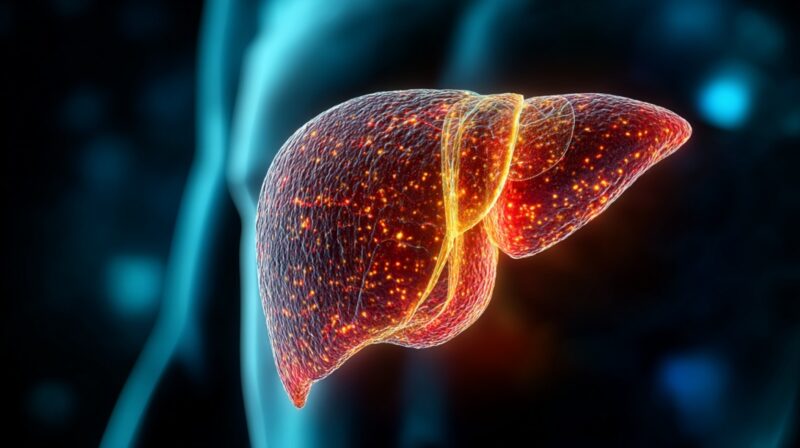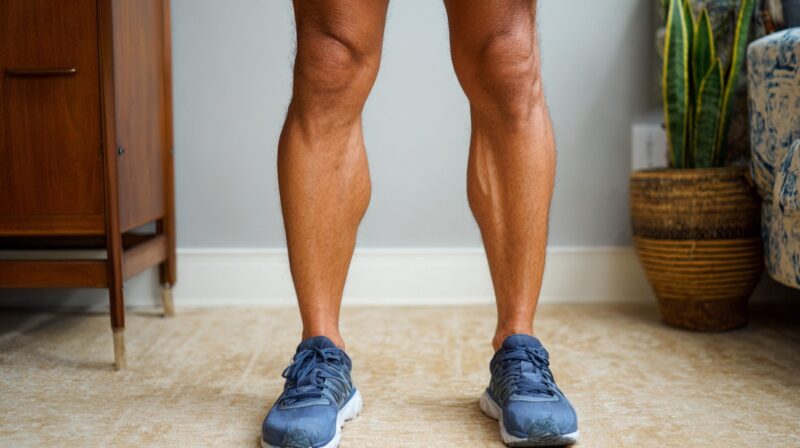Swelling in the legs, also known as peripheral edema, might seem like a harmless consequence of a long day, travel, or heat—but in many cases, it’s a red flag for deeper medical issues that need attention.
Whether the swelling is sudden or chronic, symmetrical or just in one leg, ignoring it could mean overlooking dangerous underlying conditions like deep vein thrombosis (DVT), heart failure, kidney disease, or lymphatic dysfunction.
1. Cardiovascular Causes: Your Heart Might Be Failing
One of the most serious reasons behind persistent leg swelling is congestive heart failure (CHF). In this condition, the heart can’t pump blood efficiently, leading to fluid buildup in the lower extremities. Swelling is often bilateral and worsens by the end of the day due to gravity. It may also be accompanied by shortness of breath, fatigue, and rapid weight gain.
A 2019 paper in JAMA Cardiology found that bilateral lower-limb edema was a predictive sign in 42% of newly diagnosed heart failure cases. Researchers stressed the importance of early recognition to prevent hospitalization.
In contrast, DVT (deep vein thrombosis) usually presents with unilateral swelling, warmth, and pain in one leg. This is a medical emergency; a clot in the leg can travel to the lungs and cause a potentially fatal pulmonary embolism.
2. Kidney-Related Swelling: A Silent Systemic Signal
Your kidneys filter excess fluid and waste from your body. When they begin to fail, either gradually in chronic kidney disease (CKD) or suddenly in nephrotic syndrome, fluid starts leaking into the tissue, especially in the legs and around the eyes.
The swelling tends to be puffy and soft. In nephrotic syndrome, massive protein loss in the urine leads to a drop in oncotic pressure, pulling fluid into tissues.
According to the National Kidney Foundation (2020), over 33% of CKD patients report visible lower extremity swelling during progression to stage 3 or 4 disease. Blood tests showing elevated creatinine and BUN are key diagnostic tools.
If your swelling is accompanied by foamy urine, reduced urination, or high blood pressure, see a nephrologist immediately.
3. Liver Disease and Cirrhosis: Swelling and Ascites Go Together

The liver produces albumin, a protein that helps retain fluid in the blood vessels. When liver function declines—as in cirrhosis or advanced hepatitis—albumin levels drop, and fluid leaks into tissues, especially in the legs and abdomen (ascites).
Swelling tends to be pitting and symmetrical, and patients often notice abdominal fullness, spider veins, or yellowing skin (jaundice).
In advanced liver disease, swelling can appear alongside other serious symptoms. This is especially important for patients undergoing systemic treatments such as chemotherapy, where leg swelling can also intersect with cancer-related fluid retention.
In complex cases, patients researching treatment options for Stage 4 cancer may also experience edema as a side effect of medications or due to blocked lymphatics.
In such instances, multidisciplinary care—including oncology, palliative support, and vascular specialists—is essential to address the root cause and alleviate symptoms safely.
4. Lymphedema: The “Heavy Leg” Feeling That Doesn’t Go Away
Lymphedema results from a malfunctioning or damaged lymphatic system, which fails to return interstitial fluid to the circulatory system. It can be primary (genetic) or secondary due to surgery (e.g., cancer lymph node removal), infection, or radiation.
Swelling tends to be non-pitting, firm, and develops slowly. It often starts in the foot or ankle and gradually progresses upward.
You may feel a tightness or heaviness in the leg, and over time, the skin may harden (fibrosis) or develop infections like cellulitis.
The Journal of Lymphology (2020) found that up to 40% of women undergoing breast cancer surgery developed some form of lymphedema, with delayed leg swelling onset in those receiving pelvic radiation.
5. Medications That Cause Swelling: A Hidden Side Effect

Many common medications can cause fluid retention.
- Calcium channel blockers (e.g., amlodipine)
- NSAIDs (e.g., ibuprofen, naproxen)
- Steroids
- Hormone therapy (estrogen, testosterone)
This type of swelling is usually bilateral, soft, and dose-dependent. It often resolves after discontinuing or adjusting the medication.
A meta-analysis published in Drugs & Aging (2018) found that peripheral edema occurred in 20–30% of patients on long-term calcium channel blockers, especially in older adults.
6. Endocrine Disorders: Thyroid Trouble and Fluid Retention
Hypothyroidism can cause widespread fluid retention due to reduced metabolic rate and altered kidney function. Swelling often occurs in the legs, face, and hands, and may feel rubbery rather than soft.
Other symptoms include fatigue, weight gain, constipation, and dry skin. This type of swelling is often non-pitting, and lab tests typically reveal high TSH and low free T4.
A study from Endocrine Reviews (2019) noted that over 40% of untreated hypothyroid patients exhibited peripheral edema, sometimes misdiagnosed as heart-related swelling.
7. Inactivity and Travel: Temporary but Not Harmless

Sitting or standing for long periods—especially on flights, road trips, or at a desk—can cause gravity-induced swelling, particularly in the lower legs and ankles. While this kind of swelling usually resolves with movement or elevation, it can still become dangerous over time.
Prolonged inactivity increases the risk of venous stasis and DVT. For people with poor circulation or risk factors (obesity, smoking, birth control pills), even short periods of immobility can trigger clot formation.
The AVERT Study (2021) found that air travelers on flights over 4 hours had a 3.2x higher risk of developing leg clots if they had no movement or wore restrictive clothing during flight.
When to See a Doctor: Know the Red Flags
Not all leg swelling is an emergency, but certain signs demand prompt medical attention:
- Swelling in only one leg, especially with pain or redness
- Sudden onset of swelling without an apparent reason
- Swelling accompanied by chest pain or shortness of breath
- Swelling with weight gain, fatigue, or irregular heartbeat
- Skin discoloration, sores, or temperature changes
Conclusion
Swelling in the legs is not just an annoying inconvenience—it’s often a biological alarm bell. Whether it’s caused by a failing heart, sluggish kidneys, blood clots, or a sluggish lymph system, leg swelling is almost always a symptom, not a diagnosis in itself.
Early detection and understanding the pattern of swelling (timing, location, texture, symmetry) can guide doctors toward life-saving interventions.
Ignoring swelling may mean missing the early signs of serious illness. If it doesn’t resolve with basic lifestyle changes, or if it comes with any warning signs listed above, get it checked—your legs could be telling you something your heart, kidneys, or veins can’t say out loud.
Related Posts:
- Why Should Heart Patients Be More Vigilant About…
- How Stress and Anxiety Can Lead to Gastritis - What…
- Why Your Healthcare Job Application Goes Unnoticed?…
- Why Full Mouth Dental Implants Are Worth the Investment
- Why Hemorrhoids Might Smell and When to Seek Help
- Why ARD-101 Could Become the Next Big Appetite…















